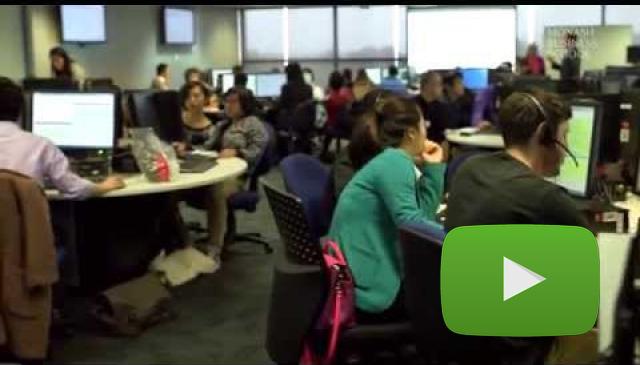STARLab
Educator
Kevin Tant | Monash University | Kevin.Tant@monash.edu
Key Features
- Simulator: STARLab (developed by Monash University)
- Students: Postgraduate, internal students
- Class Size: 70+
- Assessment: Quiz, individual assignment/presentation, foreign exchange test/report, Loans and deposits test, trading reports, end of semester test.
- Pedagogy: Single semester targeted subject, focusing on team work and individual projects. 12 x 4 hour lab sessions + 12 hours self-directed reading.
Background
STARLab is a purpose built simulation in a variety of courses covering general market operations, equity markets, financial and portfolio management, currency and bond markets. More recent applications have expanded into deeper risk management strategies using options and other derivatives as well as climate change and emissions trading.
The STARLab is a purpose built facility that runs a suite of financial market simulation programs. The laboratory complements classroom teaching by simulating a financial environment in which textbook concepts are brought to life. What makes the STARLab so unique, is Monash’s years of understanding of student behaviour in a trading environment. This knowledge and behaviour led to the development of highly focussed learning and teaching material developed and taught in the laboratories, which resulted in an extremely high level of student participation.
STARlab is ideal for achieving the goals of this unit. It allows students to analyse dealing practices and convention in foreign and cash markets, develop and organise front and back office functions of a bank’s treasury room, create and modify dealing strategies, plan, organise, analyse and justify the positions taken in the treasury room. Students are able to learn from trading data which simulates real financial scenarios.
Learning Aims
The aims and objectives is for post-graduate students to have an in-depth understanding of the money markets, interest rates, exchange rates, financial trading operations and strategies. Students will also develop an understanding of commercial banking and treasury management. Specifically, the learning goals associated with this unit are to:
- analyse dealing practices and conventions in the foreign exchange market and cash market
- develop and organise the front office and back office functions of a simulated bank's treasury dealing room
- plan, verify and settle transactions completed in the simulated treasury dealing room
- create and modify dealing strategies in the treasury dealing room
- plan, organise, analyse, justify and report on positions taken in the treasury dealing room.
Pedagogy
STARLab is delivered in the classroom with additional directed readings. At Monash, the current delivery format for the unit is:
- Computer Laboratory Session (12 x 4 hour sessions): During this time, students are placed into teams and encouraged to interact with the decision making process and inputting data into the simulation. Students are also required to undertake in-class assessment tasks including team presentations, quizzes, reports and simulation participation.
- Self-directed Reading (12 hours): The simulation requires additional reading to fully understand and interpret the financial data. Access to readings online assists students to be self-disciplined in individual learning but to also complete the assessment tasks that occur weekly. Moodle is used to disseminate all additional information and reading material.
‘This is a specialist, practically orientated unit where attendance is compulsory as assessment is based on classroom activities simulation’ says Kevin.
Assessment
There are ten formal assessment tasks in this unit. These tasks are highlighted in the summary table below. As attendance is compulsory, assessment tasks are completed and submitted in eight of the twelve weeks. This allows weekly reflection and for students to remain current with their workload and actively participants and contribute to the team’s decisions of a weekly basis. Students will generally receive feedback of the assessment tasks the following week. There is a hurdle requirement that students must pass all assessment tasks. Forty-five percent of the assessment is team based both inside and outside of class and students undertaking this unit must be prepared to commit to team based assessment and learning both inside and outside of the classroom. Peer assessment will also be a contributor to the student’s final result.
| Assessment | Responsibility | Weight |
|---|---|---|
| Moodle Quiz | Individual | 2% |
| Individual assessment | Individual | 10% |
| Individual assignment | Individual | 5% |
| Individual Presentation | Individual | 5% |
| Foreign Exchange Test 1 | Individual | 5% |
| Foreign Exchange Summary Report | Team | 10% |
| Loans and Deposits Module Test 1 | Individual | 8% |
| Trading Report 1 | Team | 15% |
| Trading Report 2 | Team | 20% |
| End of Semester Test | Team | 20% |
Resourcing
After the initial design and completion of STARLab, the only additional resourcing required is the in-class facilitators and Moodle (which is a web-based learning tool) with the ability for teachers to upload information, perform quizzes and for students to access these resources remotely. Students are encouraged to use the library for additional information and supportive material for referencing.
Outcomes
‘Students were asked whether they [trading reports] should be discontinued. Despite the workload, they advise the trading report are invaluable and should be continued’ says Kevin. He mentions that students are more confident in making decisions in a group environment and working with others even though they may not agree with every aspect. Students have the ability to use the tutor’s comments from the group and individual assignments to showcase their skills for future employment.
Kevin commented: ‘Bonus marks have been introduced into the unit related mainly to profitability. Penalty marks have been introduced as a result of student consultation as they become annoyed at other students who do not follow the code of conduct’.

